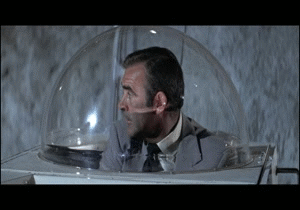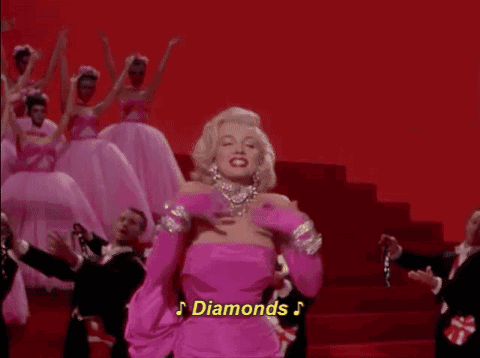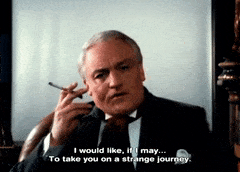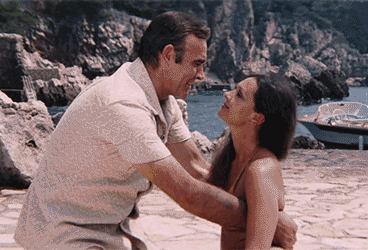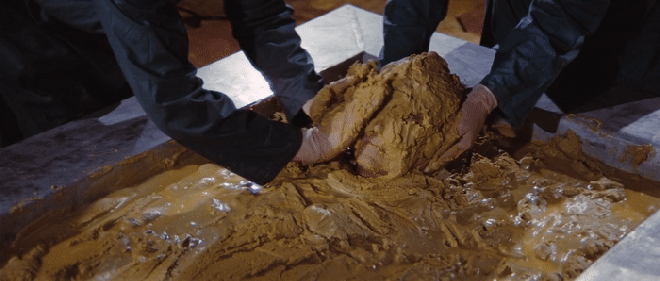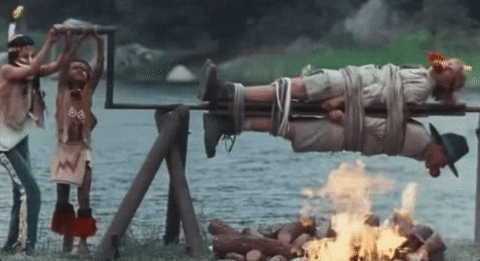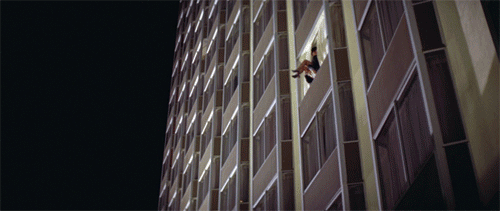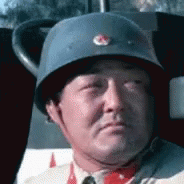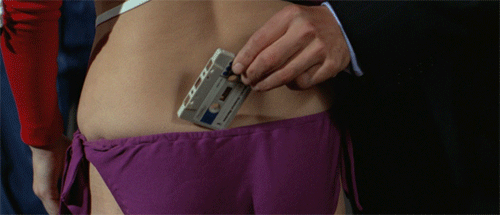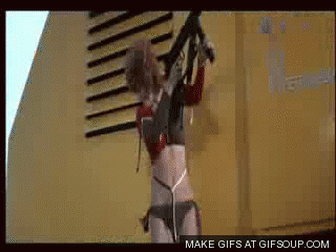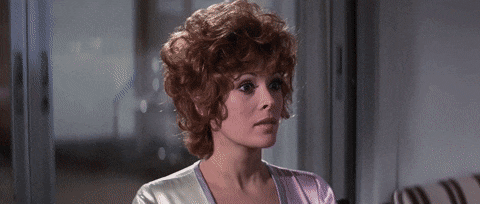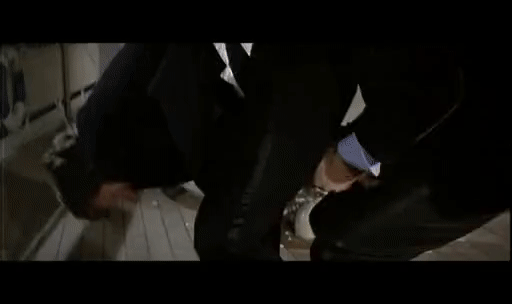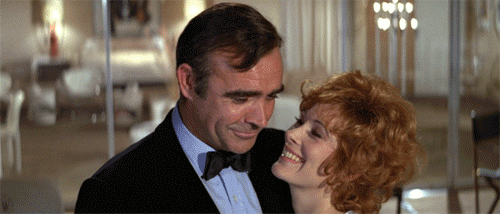Listen to the Raven Bond companion podcast here!
Released: December 1971
Producers: Harry Saltzman and Harry R. Broccoli
Director: Guy Hamilton
Written by: Richard Maibaum and Tom Mankiewicz
Plot:
After seemingly disposing of his arch enemy Blofeld, Bond is assigned to crack a diamond smuggling ring operating from South Africa to Europe to America. Going undercover, he meets smuggler Tiffany Case and a number of other dodgy characters, eventually discovering the diamonds were being trafficked for a far more serious reason. Who could be behind the plot to hold the world to ransom with a space laser? Spoiler: it rhymes with “Mo-feld”.
Famous For:
Sean Connery’s back!
Blofeld’s back!
A diamond encrusted space laser
THAT MOONBUGGY
If On Her Majesty’s Secret Service was an uncut gem - its facets revealed only after the years whittled away the George Lazenby ore around them (the GeOREge?) - then Diamonds Are Forever is a return to the Koh-i-Noor flashiness of the mid-60s Connery era.
That wouldn’t be possible without the return of Connery himself, the original diamond-in-the-rough Glaswegian turned polished gentleman spy.
Unhappy with the selections before him (which apparently included Adam West), United Artists studio boss David Picker told Eon producers Saltzman and Broccoli to back a truck of frosting up to Connery’s house until he agreed to their proposal.
Yes, I’m afraid it is going to be that kind of a diamond-reference heavy retrospective piece.
Connery, for his part, spent his £1.25 million worth of ice in a rather fantastic way - he established the Scottish International Education Trust, which grants funding to Scottish people to further their education.
He also negotiated a percentage of the domestic gross, plus got United Artists to fund two other passion projects (sadly one of them - an all-Scots production of Macbeth - was abandoned after Roman Polanski got in first with his suspiciously naked version), and Saltzman and Broccoli agreed that Connery wouldn’t have to talk to them at any time if he didn’t want to.
Imagine that - telling your bosses yes, you’ll work for them, but only if they leave you alone.
“I work best without interference.”
The narrative of Diamonds Are Forever hangs together, albeit somewhat loosely.
Based on Fleming’s fourth Bond book, published in 1956, writers Richard Maibaum and Tom Mankiewicz (brought on to give the script a suitably American spin) ditched the main villains - a pair of American gangster brothers - in favour of Ernst Stavro Blofeld making one last stab at world domination.
What I believe makes it a popular favourite among general Bond fans is the series of memorable set pieces, each of which is like a fixture in a blindingly shiny Bond tiara. The elevator fight; the moonbuggy, the Mustang two-wheeled stunt, the history-making Bambi and Thumper fight, the oil rig blast - they’re all fantastic elements that set the stage for the bigger and more outrageous ethos of the franchise in the 1970s.
Also, it has two of the most fulsome Bond girls you ever did see.
Let’s hear it for the, ahem, girls.
I was quite tough on You Only Live Twice due to plot holes and what I considered structural weaknesses and strange choices and pacing.
Diamonds Are Forever suffers similar issues, if only because it’s key narrative driver - Bond has to stop Blofeld taking over the world with a space machine - is almost exactly the same. Events happen for reasons that don’t make sense apart from the fact that “it’s a Bond film”, including at least two instances of Bond escaping from being trapped in a confined space (the coffin and the pipeline).
But I also think those set piece elements justify it getting more love than YOLT. Many critiques of the film dismiss the ridiculousness of it; the fact that the film seems to revel in that ridiculous is part of the reason that makes it such a fun watch.
The pre-credit sequence reintroduces Connery by having him on a mission to track down Blofeld. His all-too-brief bride Tracy is never mentioned; if you’d hadn’t seen OHMSS you wouldn’t be confused.
Bond tracks the supervillain down via a series of informants, including Miss World 1953 Denise Perrier in an uncredited appearance as “Woman Wearing Easy-Strangle Bikini™”.
Eventually Bond arrives at a mysterious plastic surgery lair hidden inside a bubbling mud cave. He slips in wearing scrubs in time to see a willing volunteer be put into a mud bath as prep for an operation.
Cutting-edge medical science.
Only the chap’s nostrils are uncovered by brown stuff; yet he’s mobile enough to raise a muddy gun out of the goop and point it at our erstwhile hero.
Bond is able to smother him in a mud shower that can only be described as “reverse volcanic diarrhoea”, but then Blofeld arrives to ruin the scatty spa session. He’s played this time around by Charles Gray, who’d previously appeared as Bond’s quickly-bumped-off Tokyo contact Henderson in You Only Live Twice.
“Making mud pies, 007?” is Blofeld’s witty welcome, before he explains the volunteer was going to be transformed into him, then orders his bodyguards to take Bond’s gun. Bond conveniently has a mousetrap inside his jacket, which affords him a precious distraction and time to bump off the helmeted henchmen.
He overpowers Blofeld, straps him to a gurney and pushes him into a raw bubbling mud pool, turns up the heat (somehow? Doesn’t seem to make sense, but don’t overthink it) and deadpans “Welcome to hell, Blofeld.”
I mean, I guess boiling mud would be hellish, and sure, Bond probably would want his wife’s murderer to go to hell despite having shown no overt religiosity in the series, but it does seem like an opportunity lost for “You sling mud, Blofeld, and some of it sticks”.
Ah well, missed opportunity. It doesn’t take the shine off Shirley Bassey’s corker opening number:
Sean Connery might have grown to dislike the Bond role by this point, but he’s obviously decided to have fun with it. In the “sherry scene”, Bond gives M what can only be described as a “shit-eating grin” while carbon dating the origin of his drink. M’s eye roll is just as joyous.
There’s an clever montage sequence while Bond and M are being briefed on the diamond trade; the action follows the narration but constantly undercuts the diamond expert’s assurances that all security procedures are followed and they don’t know how the jewels are being smuggled out - you see exactly how it happens.
Bond also has a lovely moment with Moneypenny at the Dover border check; Lois Maxwell was a last minute inclusion as she’d been angling for a pay rise, but I’m glad it’s there as it’s the last exchange she has with the Connery Bond. If you think about it too much, her asking him for a diamond ring so soon after his bride was murdered is a little on the nose, but the way he says “Will you settle for a tulip?” and her longing “Yes!” is gorgeous. It’s only a short clip, and will give you the warm and fuzzies.
Off Bond goes to Amsterdam, where villainous hench-pair Mr Wint and Mr Kidd have disposed of nice old lady Whistler in the Amstel, after she smuggled the diamonds out of South Africa for them in a Bible.
They’re an interesting pair, Mr Wint and Mr Kidd. They’re the first BOGO Bond villains - an inseparable creepy twosome. Ian Fleming implied in the novel that they were gay, and the movie makes it more overt, including having them hold hands and skip off together after their scorpion-based murder of the South African dentist.
I’ve always had a poor gaydar, and so a lot of those signifiers went over my head as a kid. As an adult, I can see how “look, gays are the bad guys!” isn’t helpful to the gay community.
But honestly, I’m always a bit surprised when anything before the 80s features gay people at all. I always have the mental picture that the movies, TV and most pop culture tried to ignore the presence of LGBT people in mainstream entertainment as much as possible - unless it was hyper camp showmen like Liberace or Quentin Crisp or Peter Allen.
The fact that in the mid-60s to early-70s Bond had lesbian Pussy Galore, that idea in On Her Majesty’s Secret Service that Bond’s alter-ego Hilary Bray was gay, and now Mr Wint and Mr Kidd sometimes seems positively revolutionary.
Besides that, I think Mr Wint and Mr Kidd are great villains. To me, their homosexuality is a distant second to their mutually menacing creepiness. They finish each other’s sentences, they walk in tandem, they take delight in choreography cruelty, and yet they have a distinct yin and yang about them - Mr Wint (Bruce Glover, Crispin’s dad, not really surprising) as clipped, perfumed and irritable, and Mr Kidd (jazz musician Putter Smith brought in for a rare movie role) as the more dishevelled but happy-go-lucky side of the partnership.
Even though you never see them in a scene with Blofeld, or even taking orders from him, the pair are his cronies, cleaning up the diamond smuggling pipeline by eliminating every point of contact from South Africa to Amsterdam to Las Vegas. They’re always one step ahead of Bond, quipping about taking photos of Mrs Whistler’s corpse to show the school children she’s left behind; then pretending to mourn a loved one when Bond arrives at the Slumber funeral home in Sin City.
The whole funeral home smuggling arrangement doesn’t make much sense if you think about it too closely.
Bond, undercover as Peter Franks, is told by his Amsterdam contact Tiffany Case that he has to think of an original way to smuggle the diamonds out of her chandelier and into America. That opportunity arises only when the real thPeter Franks escapes from British custody and makes his way to Tiffany’s Amsterdam flat. Bond intercepts him (by way of a most excellent Dutch accent) and the pair fight to the death in the elevator. It’s a brilliantly claustrophobic sequence that’s left without musical backing until near its end, and its raw mano-a-mano fight to the death feel makes it memorable.
However, Franks’ death allows Bond to use his body to transport the diamonds to the US as part of faux funeral arrangements. It must have been some quick calls to get the Slumber team lined up; but it certainly feels like a well-oiled operation by the time Bond arrives in Las Vegas and is met by some shady funeral parlour characters.
He has a quick pow-wow with Felix Leiter at customs, who asks Bond where they hid the jewels. “Alimentary” is Bond’s reply. If he means the alimentary canal, then that summons up the image of Bond and Tiffany shoving the diamonds down Franks’ throat. Of course, given the canal technically runs the whole way through the body, it could also summon the vision of Bond and/or Tiffany having to go the back route; inadvertently creating a very blingy set of anal beads.
There’s a lot of rigmarole at the Slumber parlour with the corpse being cremated, the “ashes” being returned, and then Bond having to deposit the ashes in a crypt, taking his payment in return. Of course, he’s then bumped on the head by Wint and Kidd who - thinking he’s actually Franks and therefore part of Operation Cleanup - roll him into a coffin and into the fire for a bigger burn than anything the Friars Club could dish out.
The only thing that saves Bond is that Mr Slumber and Shady Tree shut off the flames and accuse Bond of giving them fake diamonds. Bond returns serve saying they gave him fake money, and then waltzes out of there like he hadn’t just almost been roasted alive.
Fun fact: while searching for a suitable GIF for this point, I googled the term “Spit Roast GIF” and hoooooo boyyyyy people are filthy.
Bond realises Shady Tree is a comedian performing at The Whyte House, a lux hotel and casino owned by reclusive billionaire Willard Whyte. He catches the last moments of Shady’s “act”, which consists of the grouchy old bugger throwing out terrible one-liners while flanked by two showgirls.
After dying onstage with such a crap act, it’s no surprise Shady Tree is chopped down by Wint and Kidd in his dressing room after the show, who as yet don’t know the diamonds were fake.
(Sidebar: if we assume Tiffany Case had the legit diamonds in her chandelier, it means at some point Bond had to switch them out for fakes, which means it was probably when he shoved them either down Franks’ throat or up his, er, “smugglers’ cove”, if you get my drift. Talk about doing it all for Queen and country.)
Bond then decides to kick back and try his luck at the tables, and it isn’t long before he’s in Plenty of good company.
Plenty is a good-time gal looking for love, and Bond’s reaction to her name is possibly the greatest in the franchise after “My name is Pussy Galore/I must be dreaming”.
Their meeting is not destined for a happy ending though, as Slumber’s goons get to Bond’s room before he does and promptly throw a nearly-naked Plenty into the hotel pool.
The goons leave Bond alone, as it’s Tiffany Case’s job to “negotiate” the return of the real diamonds.
That happens at the famous Circus Circus, used in the movie because the circus owner was a big Bond fan and invited producers to film there. Through a hilariously convoluted series of set-ups and covert spy manoeuvres, Tiffany is directed to the water balloon game, where she miraculously wins a large soft toy full of diamonds.
One of my favourite lines in the whole film is that of the young boy playing next to Tiffany, who smells a rat straightaway and says “You have to win three times to get that toy!” It’s so real to my experience - as a kid, if I played a skill game like that, I would at best win some piece of tiny plastic crap, not the giant plushie I hoped for. I always hated movies that depicted wholesome young couples winning each other oversized bunnies and ponies, so I am 100 per cent with Annoyed Kid.
Tiffany manages to lose the CIA and escape with the diamonds; but Bond is able to track her down to a house (which we assume is hers, but it’s never explained).
Sadly, Plenty O’Toole’s second encounter with a pool didn’t end as well as it did at the hotel pool-based interactions get worse for Plenty, as she is later found drowned in a pool at Tiffany’s own house.
Is now a weird time to point out that actor Lana Wood’s older sister Natalie would be found drowned in mysterious circumstances ten years after this film came out?
Bond doesn’t seem surprised - he’s just chilling in a banana lounge until Tiffany arrives. She, however, is shocked enough to rethink her work for the bad guys, and agree to help Bond recover the diamonds, which she stashed at the airport.
Eventually the pair end up following Professor Metz, whom we find out later is a laser refraction expert. Bond sneaks into the back of his van at a petrol station; Tiffany follows behind as they head out to Willard Whyte’s research laboratory.
Once again, this is another great set piece that starts with Bond pretending to be a scientist he just met to sneak into the lab to see what Professor Metz is using the diamonds for, and ends with a MOON BUGGY CHASE.
From the interior set that implies the moon landings were fake, to Bond bouncing around the Nevada desert in that overly whirly-gigged moon buggy, to stealing a three-wheeled motorbike and peeling off back to Tiffany and her red Mustang - the whole thing is stupidly fun.
It’s followed by another legendary car chase, including a parking lot jump and the infamous Mustang two-wheeled stunt, which the production team messed up by having it go into the narrow alleyway on one side, but come out on the other side. Easily solved - they just added in a mid-shot of Tiffany and Bond moving in the car to imply it rolled around. Nobody even noticed.
Bond and Tiffany shack up in the honeymoon suite at The Whyte House, with Felix stationing CIA pals outside to make sure Tiffany and Bond go anywhere. Tiffany seems quite happy to stay in for some fishy lovemaking on top of their aquarium bed, but 007 isn’t up for that. He dons a tux and hitches a lift on the hotel’s exterior elevator, then breaks into the penthouse where Willard Whyte is believed to sequester himself.
Finding himself in an elaborate lavatory, he’s busted by a brash Texas drawl telling him to leave his gun and head out into the main lair, where he finds not one, but TWO Blofelds:
The idea that a reclusive millionaire could be taken over by an imposter literally came to producer Albert R. Broccoli in a dream - only the dream was about his real-life friend and actual reclusive millionaire Howard Hughes.
Again, the giant floor map of Whyte Industries, Blofeld’s cigars, Bond shooting the wrong Blofeld, Blofeld shuffling Bond back into the elevator - it’s just SO fun to watch. It’s the polished cubic zircon of supervillainy.
By all rights, Bond should have been gassed to death in that elevator, or shot by Mr Wint and Mr Kidd as soon as the doors opened on the ground floor - but of course, Bond has plot armour and the film gets away with it because of Wint and Kidd’s predilection for elaborate deaths.
They place Bond’s unconscious body to be laid as part of an underground pipeline - by the time 007 wakes up he’s entombed, alone except for a rat and the smell of Mr Wint’s cologne on his clothes. He breaks some sort of electrical monitoring device to draw technicians out to open an access panel, deadpanning that he was out walking his rat and lost his way.
The next phase of the film is one of my all-time favourites. Q, who arrived in town with the real diamonds, creates his own version of the voice-changing device Blofeld’s been using to pretend to be Bert Saxby, Blofeld’s right hand man, in an attempt to get the whereabouts of the real Willard Whyte’s location out of him. It’s never explained how they got Bert Saxby’s voice pattern on tape in order to do that (and why the actual Bert Saxby turns up at Whyte’s house later to kill him - how did he know?!), but shhhh, just enough the site of Sean Connery in a cream suit with an incredibly short pink tie.
The CIA and Bond head out to Whyte’s hillside ranch, with Bond making the first incursion.
Strolling into the late 60s/early 70s architectural glory that is the abode, he comes across Whyte’s two bodyguards - the agile and deadly lady fighters, Bambi and Thumper.
Point of note here: Trina Parks, who played Thumper, was the first African-American Bond girl. She is also the first woman in the franchise so far to KICK BOND IN THE FUCKING BALLS:
I’ve read some reviews that don’t regard this sequence highly, but I bloody love it. Half the fight is just Bambi and Thumper showing off their amazing gymnastics skills; the other half is pummelling the living shit out of Bond. Now I love Bond, of course, but he absolutely takes a whaling here and it is GLORIOUS.
The only reason he wins is because he’s able to use his size and strength in the pool. If Bambi and Thumper had been synchonised swimmers as well as gymnasts, he would have been toast.
The CIA arrive in time to find Bond wrestling with the girls, who reveal Whyte is locked up in an apartment downstairs.
And this is where, for me, the film really kicks into high gear - because of Jimmy Dean as Willard Whyte.
“Are… are you being more charismatic than me?”
A country singer and a TV host, Dean is eminently watchable - providing comic relief, but in a way that drives the momentum, rather than stalls it (looking at you, Sheriff J.W. Pepper).
It’s Whyte who gets Bond to draw the space machine he saw during his first trip to the Whyte Industries research facility, and puts together that with Professor Metz’s laser refraction expertise Blofeld has a deadly weapon on his hands. It’s Whyte who rings his space lab to discover that the rocket has just launched, and what do you know, gets taken over by someone else, and the mission cannot be aborted.
And lo - another ridiculously silly world domination plot involving an elaborate space weapon. The difference here is that Blofeld doesn’t waste time. He immediately blows up nuclear weapons in the USA and China, as well as a Russian nuclear sub. I love the montage sequence of the laser being set off - clearly the budget was running over so the special effects moments are kept very brief. There’s also a hilarious moment where a Chinese actor was given the direction that he couldn’t possibly overact when faced with imminent death:
And it’s Willard Whyte who works out where Blofeld must be running his nefarious plan from. Again, it’s a line delivery seared into my memory… “Baja!”
The final sequence on the oil rig was apparently a workaround, after more elaborate plans fell through. Blofeld stalks the decks like a smug aristocrat inspecting construction of his new stables. Bond arrives via a strange, inflatable pod that resembles a giant cuddly D20 and declares himself an environmental rep there to start cleaning up the world. Pretty quippy for a man who has discovered his wife’s murderer has yet another evil plan and has already caused three nuclear incidents, but again, I’m overthinking it.
Tiffany Case, in the skimpiest of bikinis, is on the platform, having been kidnapped by Blofeld in drag back at The Whyte House.
She seems uninterested in Bond, but once he gets searched by Blofeld and his replacement cassette tape is discovered, she decides to help. Bond uses sleight of hand to switch the cassettes, and slips the proper one into the back of Tiffany’s bikini bottom.
But she didn’t realise he’d already done the switch, and so she causes a distraction and puts the real one back in. Bond chastises her before he’s crash tackled by henchmen - but he’s able to send up a weather balloon, allowing Willard Whyte (again in the thick of the action piloting a chopper) and Felix Leiter to send in the explosions.
So let me at this juncture turn to Tiffany Case, played by Jill St John, and the first American leading Bond girl.
Read a few reviews about this film, and you’ll find mixed thoughts on Tiffany. She occupies the grey space between naughty bad girl and heroic good girl. She’s a smuggler after all, but changes side to help Bond; she acts tough but she’s not a badass. Tiffany is scared when she thinks “Peter Franks” has killed James Bond (after Bond slipped his wallet with identifying Playboy Club membership card into Franks’ jacket pocket); she is terrified when she realises the assassins who murdered Plenty were looking for her.
She tries to cajole Bond into helping her get a lighter sentence - or pardon - for her crimes, and even tries to sweet talk Felix Leiter when he visits the honeymoon suite.
“I make this incredibly uncomfortable fish bed look good.”
So she’s got an aptitude for deceit, a quality that ensures her survival in the end. She has a lovely scene with Q on the casino floor, again trying to find out more information about what might happen to her. Q is too occupied with his pokie-beating electro-magnetic ring to notice when she disappears - she’s seen Blofeld in drag leaving the club and follows him (even though technically she wouldn’t have seen his face before, but again, overthinking).
So she winds up on Blofeld’s oil rig, somehow equipped with a range of skimpy swimwear. She feigns happy ignorance (“Hey Ernst!) to better play along with Blofeld’s impression of her as a ditz. She even takes jabs from Bond in her stride. But when it counts, she tries to help. And yes, she’s a bit shit. But she’s a smuggler, not a street fighter. And she got way in over her head, with its many wigs.
And when she tries to help, as Bond swings Blofeld in his mini-sub around the oil rig, we get the hilarious sight of her attempting to fire a machine gun and being blown backwards over the edge of the platform into the water.
It’s very silly, but it’s not unrealistic. She’s a tiny slip of a girl, and her complete confusion as to what to do with the gun shows she’s no expert.
So Tiffany Case may not be as badass as Pussy Galore or as sweet as Kissy Suzuki or as captivating as Tracy di Vicenzo, but she’s probably more relatable than any of the other Bond girls - while also being able to pull off spending half the film in tiny, tiny pants.
Eventually, Bond finishes having fun with Blofeld in his mini-sub and gracefully swan dives off the platform just before it explodes. Another mission accomplished - the world is saved from nuclear annihilation, but of course, we still didn’t see Blofeld actually die.
Cut to Bond and Tiffany taking a ship back to England, specifically for the nautical nookie time, one imagines. We see that there is one loose end they haven’t tied up - or rather two - Mr Wint and Mr Kidd.
They arrive at the suite Willard Whyte arranged for Bond and Tiffany to present them with a surprise banquet dinner. Tiffany is all keen, but Bond smells a rat - the same cologne he smelled on himself when he was in the pipe. He catches Mr Wint out with a clever trick question about claret (that’s two alco-brags in one film!).
Realising they’re rumbled, Mr Kidd then sets fire to meat skewers and makes his way over to Bond, albeit in a very strange, slow motion sort of way. Mr Wint throws a cord around Bond’s neck, but the spy is able to break the claret bottle on Mr Kidd, which sets him on fire. Burning, he jumps overboard into the water.
My favourite thing is Tiffany’s reaction:
She memed before memes.
Visibly upset at his partner’s demise, Mr Wint fights back against Bond. Tiffany tries to help by throwing the bomb surprise at them, but it turns out it’s really just a bomb. Bond manages to grab Mr Wint’s hands, bring them through his legs and tie the bomb them, then yanks his hands upwards. For some reason Bruce Glover was directed to make Mr Wint almost squeal with some sort of pleasure - it’s meant to be funny, but definitely feels a little on-the-nose decades later.
Bond elegantly flips Mr Wint overboard, and he explodes on the way down. Bond must have suffered some sort of injury as “He left with his tail between his legs” is not one of his better “I just killed you quips”.
Thankfully, Tiffany is there to save the day with her very serious question to Bond, as they look up to where Blofeld’s laser floats dormant in space - “How are we going to get all those diamonds back?”
It’s great that a female character get the final line, and it actually be good, and funny.
Diamonds Are Forever is the end of an era with the departure of Sean Connery; it is also a transitional film that reflects the new decade and the producers’ realisation that the big silly set pieces were popular with audiences, and American girls could be equal foils for Bond. They would have much more to play with as the franchise acquired its next James Bond and really leant into the outrageous.
Thank you for reading this instalment of the James Bond Retrospective! If you enjoyed it, you can sign up to support the series and my other writing/podcasting efforts via my Patreon page. Thanks to all of you who are already members; your support is truly invaluable.
You can listen to the companion Raven Bond Diamonds Are Forever podcast here:
Stu and I have are also ranking the Bond films as we watch and podcast about them. Here’s how we stand:
See you next time for the debut of Roger Moore in Live and Let Die!

